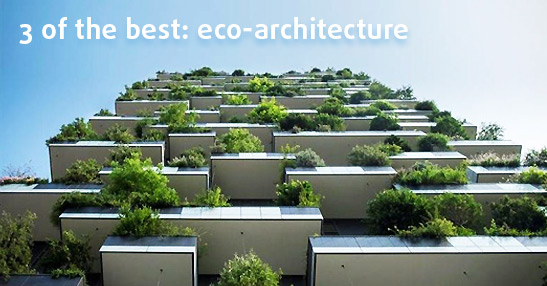
3 stunning examples of eco-architecture at its best from across the globe.
Tulips, gardens and forests… not necessarily the first names that come to mind when you think of massive concrete mega-structures and urban architectural projects. But then again, times are changing. Sustainable, or eco-friendly, architecture is à la mode; hence why organic and natural-sounding names are being attributed to many new projects all around the globe…
And with good reason, too. The term “sustainability” – now a buzzword in various sectors such as energy, finance and agriculture, as well as real estate and construction – only entered into common parlance around 25 years ago.
However, in the current climate and taking into account the need for humans to take immediate environmental responsibility, there is much demand for so-called eco-architecture to be the foundation for new construction projects.
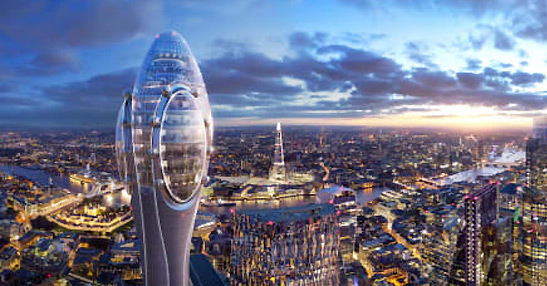
The expected view from the top of The Tulip, City of London.
The most recent high-profile announcement of its type is The Tulip by Foster and Partners. The latest offering from the prolific global architecture studio founded by Norman Foster is an elaborate 305-metre, tulip-shaped visitor attraction just down the road from – and, in the future, overlooking! – another prominent contribution to the London skyline (also conceived by Foster and Partners) colloquially-known as The Gherkin.
Sky bridges, internal glass slides and “gondola pod rides” around the building’s façade will all be integrated into the skyscraper’s bud-shaped design to enhance the visitor experience and provide complete 360-degree views of the city.
As part of the architectural commitment to the environment, its building materials will be specially selected to reduce energy consumption and harness solar power, and a zero combustion technology system will provide interior heating and cooling.
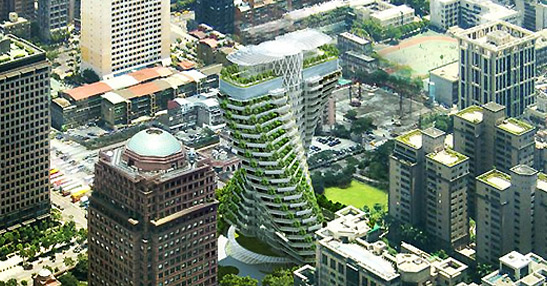
The Agora Garden Tower, Taipei City.
The next project on our list is the Agora Garden Tower – or Tao Zhu Yin Yuan Tower, to give it its proper name – in Taipei, which was actually finished towards the back end of last year. The breath-taking double helix-inspired architectural design of this 20-storey skyscraper is not its only innovative feature; its construction is also made out of recycled and recyclable materials and it has eco-architecture as its core philosophy.
What’s more, the building’s eco-friendly design includes photovoltaic panels as its crowning piece, as well as 23,000 trees and shrubs on its façades, roof and balconies – similar to the amount found in New York’s Central Park – which are aimed at absorbing 130 tonnes of carbon dioxide per year.
In a megacity home to almost three million people in its metropolitan area alone, there is much need for environmentally-sustainable structures such as this one, conceived by the Belgian architect Vincent Callebaut.
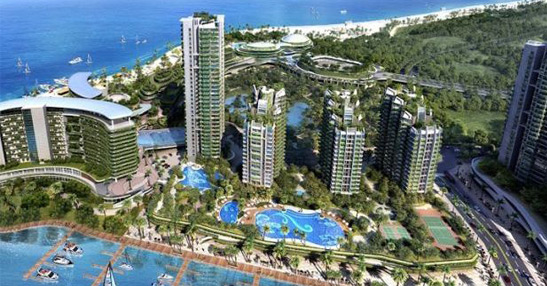
The huge-scale Forest City in the Johor Strait.
The third – and by far the most ambitious – project on our list is Forest City in Johor Iskandar, Malaysia. This sustainable project is not just a skyscraper. It is an entire city, nay, four man-made islands in the Johor Strait located between Malaysia and Singapore.
These four islands will be distributed into one industrial area, a central business district and tourist area, a financial district and a conference and forum district. The total area is projected to be 3,425 acres, while the ambitious initiative – due to be completed in 2035 – could create as many as 220,000 jobs and house 700,000 people.
The architectural design of this smart city looks to harvest rain water and storm water, create a vast network of inter-connected rooftop parks and gardens, utilise solar power and become a completely new sustainable urban epicentre.
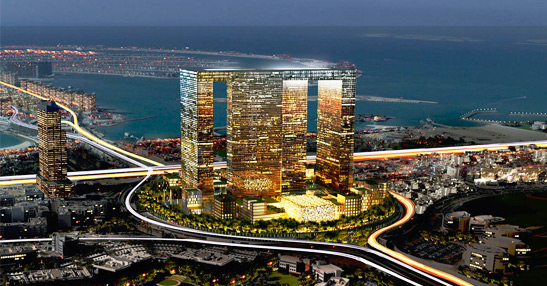
Not quite so successful: the envisaged view of Dubai Pearl.
While we’re at it, though, we must spare a thought for Dubai Pearl; the equally exotically-named elite property development in the United Arab Emirates’ swankiest of locations. Hyped up to be a landmark real estate project comprising two 5-star hotels and exclusive residential units, the development has fallen on hard times and there are fears that it will eventually become a redundant investment – or “white elephant” in real estate terminology.
 en
en



 Vlaams-Nederlands
Vlaams-Nederlands
0 Comments
Leave a Comment
DISCLAIMER
The opinions and comments expressed by contributors to this Blog are theirs alone and do not necessarily reflect the views of VIVA Homes Under the Sun Ltd, any of its associated companies, or employees; nor is VIVA to be held responsible or accountable for the accuracy of any of the information supplied.
Have you got something to say?